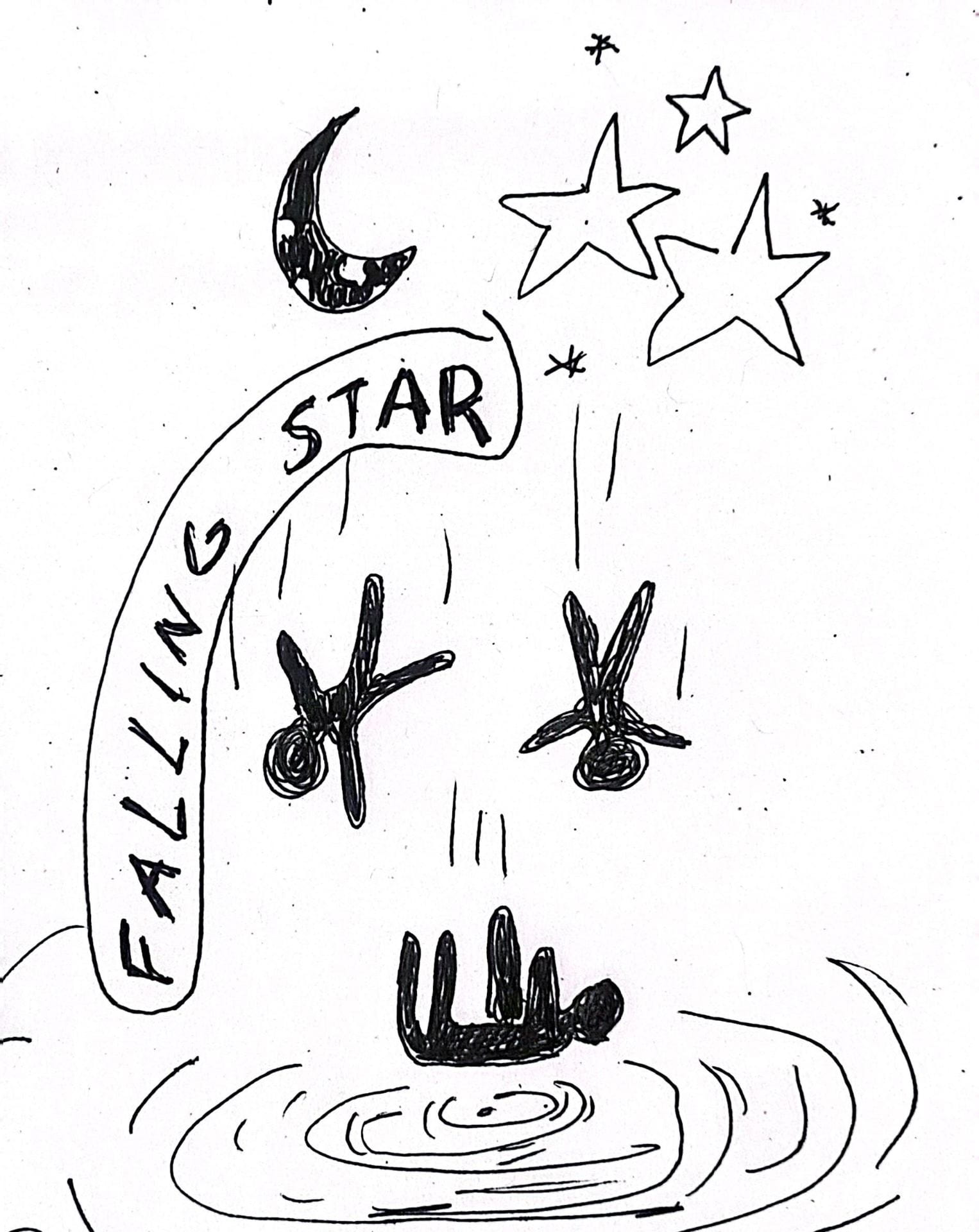In the beginning, God took the greatest dump of all Time, squeezed time and space through the white hot speck of what would be the universe. You can’t talk about the beginning of the universe without making it sound like a fairytale. A myth, if you will. For in the beginning, there was time and space, and light could travel a meaningful distance in the space of a second divided into a number with forty-three zeros in it. Space was divided into seconds and time was measured by the distance traveled outward by that white hot speck of light. During that time — or space, for time is measured by space and space is measured by time — there was nothing. Nothing physical, at least, in whatever sense that word has when the laws of physics had yet to be combed into perfect fractals. Because in the white hot speck when God took the biggest dump of his Life and squeezed the universe (which can be compared to divine fecal matter because the universe is but a fraction of his power and energy and Being) through a point that isn’t just a point (there was nothing but now there was something and a point is a paradoxical nothing because a point has no mass or size but is a nonetheless a thing), it was too hot and small and extreme for the laws of physics to be obeying themselves.
Within ten seconds the universe expanded from nothing to a meter to a hundred-light-years wide. We can talk about seconds here because a second is an absolute construct defined by the vibration of a certain atom in certain conditions (not by the amount of time it takes Newton’s apple to fall a certain distance from the tree to the Earth), a definition which can be described and transcribed and transmitted, then replicated absolutely (if theoretically) so that even when there were no atoms, a second is a second is a second and in a second, light (which is absolute, in both the physical and some might say gospel sense of the word) travels a distance greater than what the average person might have traveled in a lifetime a century ago but certainly not greater than the aggregate distance traveled by an middle-to-upper class human in their first fifty years of life in the twenty-first century. In any case, during the first ten seconds of the Beginning there were billions of Kelvins and quarks and antiquarks (the physicists gawk and cork the matter and antimatter into stuff and anti-stuff).
Hot enough to melt a diamond — a once-viceral image obliterated by a quick Google search, which now enables you to see diamonds melt before your eyes on a small laptop screen. They look tiny, the red hot specks, and you watch in your sweats, sitting in air con, no heat no smoke no diamond carbon dioxide to breathe and you think: hot enough to melt a diamond? That’s not that hot.
For hundreds of thousands of years — longer than the existence of the human race — the universe cooled. It cooled rapidly, but three-hundred-and-eighty-thousand years is still a long time. The universe cooled until it was hot enough to melt a diamond, then to whatever coolness the universe is now, and during that time God napped. He did not set a timer because he could tell how far along his concoction was getting to even while he napped, and so he Napped while part of his consciousness kept tabs on what was going on with this project of his, which was and apparently still is mostly helium and hydrogen. He knew it would turn out well (he still couldn’t help wanting to poke at the air bubbles) and ultimately kept his hands off of things until everything settled into place. To curb his restlessness he took a Nap, maybe chatted to the angels and spirits and maybe even to Christ the Son (depending on your Christology), while resting in the sunless light and in the non-matter non-anti-matter that existed then, whatever existence means in a time outside time and a space without space.
Writer | Priscilla Lee ’25 | prlee25@amherst.edu
Editor | Jackeline Fernandes ’24 | jfernandes24@amherst.edu
Artist | Jacinta Smith ’25 | jsmith25@amherst.edu
